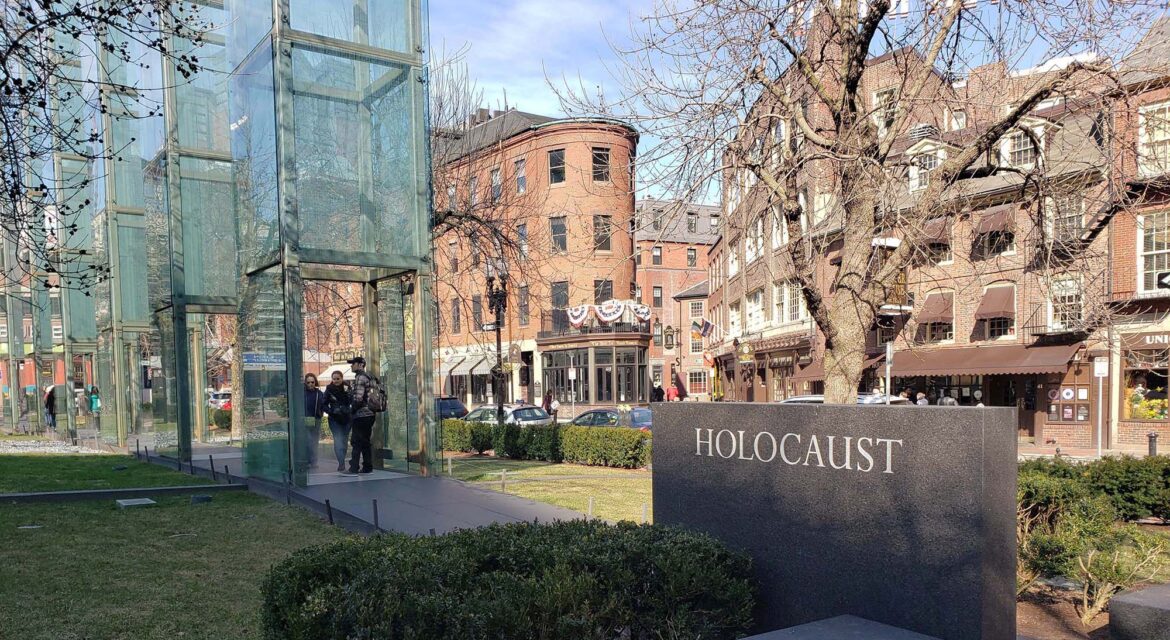 Boston-area survivors of Nazi concentration camps drove the creation of the New England Holocaust Memorial. Support and sponsorships from more than 3,000 individuals and organizations enabled the creation of a memorial that is designed to encourage a universal understanding of all that happened during the Nazi regime.
Boston-area survivors of Nazi concentration camps drove the creation of the New England Holocaust Memorial. Support and sponsorships from more than 3,000 individuals and organizations enabled the creation of a memorial that is designed to encourage a universal understanding of all that happened during the Nazi regime.

Holocaust Symbolism and Sobering Experiences
Holocaust survivor, Stephan Ross, who was imprisoned at the age of nine and survived 10 different concentration camps, drove the creation of the New England Holocaust Memorial. After coming to the United States in 1948, he worked for the City of Boston for more than 40 years and would eventually form a committee to put together a proposal for a memorial that would ensure the six million Jewish victims and other innocent people who lost their lives in the Holocaust would be remembered. His efforts would see the New England Holocaust Memorial dedicated in 1995.
 The memorial features six glass towers, each of which represents a different Nazi extermination camp. These six are Auschwitz-Birkenau, Bełżec, Chełmno, Majdanek, Sobibor and Treblinka, with the names of each on the ground. All six towers consist of 22 individual panels of glass. The outside walls of the panels are inscribed with seven-digit numbers, evoking the numbers tattooed on the arms of the concentration camp prisoners.
The memorial features six glass towers, each of which represents a different Nazi extermination camp. These six are Auschwitz-Birkenau, Bełżec, Chełmno, Majdanek, Sobibor and Treblinka, with the names of each on the ground. All six towers consist of 22 individual panels of glass. The outside walls of the panels are inscribed with seven-digit numbers, evoking the numbers tattooed on the arms of the concentration camp prisoners.
At the two entries are didactic panels, one outlining the chronology of events that led to the establishment of what would become known as the Holocaust, while the other contains a quote from Pastor Martin Niemoller, who placed responsibility for this event in the hands of every individual. As visitors walk along the path, entering the towers, they are tattooed with the shadows of numbers, and trapped momentarily in a theater of horror. At the base of each tower, a grate lies over a 6-foot square pit with warm steam rising from coals that smolder at the bottom, providing a sobering experience for visitors.
Located near the Freedom Trail, the New England Holocaust Memorial has become an important element of the city that draws the attention of residents and tourists.

Connecting with the Boston Community
 Educational and interpretative assistance and materials are available for groups planning visits to the Memorial. Speakers and tour guides can be scheduled to meet with groups of 10 or more.
Educational and interpretative assistance and materials are available for groups planning visits to the Memorial. Speakers and tour guides can be scheduled to meet with groups of 10 or more.
Contributions to the New England Holocaust Memorial (NEHM) can be made very easily. These contributions help ongoing repairs, continuing programs, materials, and operations that educate the public and foster reflection about the impact of bigotry during the Holocaust and today.
This means of support and connection to Boston highlights how monuments like the New England Holocaust Memorial can make an impact no matter their direct relationship to certain elements of history. That so many people came together to drive and fund the creation of the memorial proves that no matter the details associated with a given person or place, what matters is how monuments and memories are positioned and remembered to create a positive impact in the present and future.

Hope and Aspiration
 While the experience that visitors can have at the New England Holocaust Memorial reminds them of the deadly impact of prejudice, hatred, and bigotry, the towers of the memorial are ultimately designed to be towers of hope and aspiration. Stephan Ross wanted the memorial to serve as a lesson to future generations and the sense of remembrance that it enables for all visitors is the most important aspect of the legacy it represents in Boston and beyond.
While the experience that visitors can have at the New England Holocaust Memorial reminds them of the deadly impact of prejudice, hatred, and bigotry, the towers of the memorial are ultimately designed to be towers of hope and aspiration. Stephan Ross wanted the memorial to serve as a lesson to future generations and the sense of remembrance that it enables for all visitors is the most important aspect of the legacy it represents in Boston and beyond.

